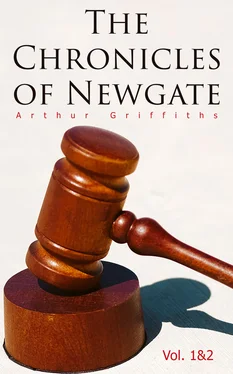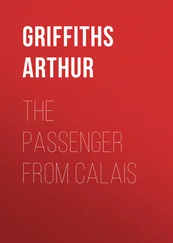The affair of Count Konigsmark may be classed with the foregoing, as another notorious instance of an attempt to bring about marriage with an heiress by violent means. The lady in this case was the last of the Percies, the only child and heiress to the vast fortune of Jocelyn, the Earl of Northumberland. Married when still of tender years to the Earl of Ogle, eldest son of the Duke of Newcastle, she was a virgin widow at fifteen, and again married against her consent, it was said, to Thomas Thynne, Esq., of Longleat;[72] “Tom of Ten Thousand,” as he was called on account of his income. This second marriage was not consummated; Lady Ogle either “repented herself of the match and fled into Holland,”[73] or her relatives wished to postpone her entry into the matrimonial state, and she was sent to live abroad. Previous to her second marriage, a young Swedish nobleman, Count Konigsmark, when on a visit to England, had paid his addresses to her, but he had failed in his suit. After his rejection he had conceived a violent hatred against Mr. Thynne. The Count was “a fine person of a man, with the longest hair I ever saw,[74] and very quick of parts. He was also possessed of great wealth and influence;” “one of the greatest men,” Sir John Reresby tells us, “in the kingdom of Sweden; his uncle being at that time governor of Pomerania, and near upon marrying the King’s (of Sweden) aunt.” Konigsmark could command the devoted service of reckless men, and among his followers he counted one Captain Vratz, to whom he seems to have entrusted the task of dealing with Mr. Thynne. Vratz, although a brave soldier, who had won his promotion at the siege of Mons, under the Prince of Orange, and to whom the King of Sweden had given a troop of horse, was willing to act as an assassin. The Count came to London, living secretly in various lodgings, as he declared to hide a distemper from which he suffered, but no doubt to direct privately the operations of his bravoes. Vratz associated with himself one Stern, a Swedish lieutenant, and Boroski, “a Polander,” who had arrived in England destitute, and whom, it was subsequently proved, the Count had furnished with clothes and arms. The murderers, having set a watch for their victim, attacked him at the corner of Pall Mall, about the spot where Her Majesty’s Theatre now stands, as he was riding on Sunday night the 21st February, 1681, in his carriage from the Countess of Northumberland’s house. One of them cried to the coachman, “Stop, you dog!” and a second, Boroski, immediately fired a blunderbuss charged with bullets into the carriage. Four bullets entered Mr. Thynne’s body, each of which inflicted a mortal wound. The murderers then made off.
The unfortunate gentleman was carried dying to his own house, where he was presently joined by the Duke of Monmouth, his intimate friend, Lord Mordaunt, and Sir John Reresby, specially sent by King Charles, who feared that some political construction would be put upon the transaction, and was anxious that the perpetrators of the crime should be apprehended. Reresby, who was an active magistrate, granted warrants at once against several suspected persons, and he himself, accompanied by the Duke of Monmouth and others, made a close search, which ended in the arrest of Vratz in the house of a Swedish doctor, in Leicester Fields. His accomplices were also soon taken, and all three were examined by the King in Council, when they confessed that they had done the deed at the instigation of Count Konigsmark, “who was lately in England.”[75] At the same time a Monsieur Foubert, who kept an “Academy” in London, which a younger brother of Count Konigsmark attended, was arrested as being privy to the murder, admitted that the elder brother had “arrived incognito ten days before the said murder, and lay disguised till it was committed, which gave great cause to suspect that the Count was at the bottom of the whole bloody affair.”[76] The King despatched Sir John Reresby to seize Konigsmark, “but the bird had flown; he went away betimes, on the morning of the day after the deed was perpetrated.”[77] He went down the river to Deptford, then to Greenwich, and the day after to Gravesend, where he was taken by two King’s messengers, accompanied by “Mr. Gibbons, servant to the Duke of Monmouth, and Mr. Kidd, gentleman to Mr. Thynne.” He was dressed “in a very mean habit, under which he carried a naked sword.” When seized he gave a sudden start, so that his wig fell off, and the fact that he wore a wig, instead of his own hair as usual, was remembered against him at his trial, as an attempt at disguise. The Count was carried to an inn in Gravesend, where he expressed very great concern when he heard that his men had confessed; declaring that it (the murder) was a stain upon his blood, “although one good action in the wars, or lodging on a counterscarp, would wash all that away.” His captors received the £200 reward, promised in the Gazette , and in addition the £500 offered by Sir Thomas Thynne, Mr. Thynne’s heir.
They carried him at once to London, before the King in Council, where he was examined, but the Council being unwilling to meddle on account of his quality, as connected with the kingdom of Sweden, he was then taken before Chief Justice Pemberton, who could, if he thought fit, send him to gaol. He was examined again till eleven at night, and at last, “much against the Count’s desire,” committed him to Newgate. He stood upon his innocency, and confessed nothing, yet “people are well satisfied that he is taken.”[78] While in Newgate, Count Konigsmark was lodged in the governor’s house, and was daily visited by persons of quality. Great efforts were now made to obtain his release. The M. Foubert, already mentioned, came to Sir John Reresby, and offered him any money to withdraw from the prosecution, but the overtures were stoutly rejected, and his emissary was warned to be cautious “how he made any offers to pervert justice.” A more effectual attempt at bribery was probably made on the jury, of whom the prisoner challenged eighteen. He had their names on a list, and knew beforehand whom he could or could not trust. The Judge, Lord Chief Justice Pemberton, was also clearly in his favour. The defence set up was that Vratz had taken upon himself to avenge an affront offered by Mr. Thynne to his master, and Count Konigsmark denied all knowledge of his follower’s action. The Count tried to explain the privacy in which he lived, and his sudden flight. But the counsel for the prosecution laid great stress on the intimacy between him and the murderers; the absence of any object on the part of the latter, unless instigated by the former. The Chief Justice, however, summed up for the Count, assuring the jury that a master could not be held responsible for the acts of his servants, if ignorant of them, and that if they thought the Count knew nothing of the murder till after it was done, they must acquit him. Which they did, “to the no small wonder of the auditory,” as Luttrell says, “as more than probable good store of guineas went amongst them.” Konigsmark was set at liberty at the end of the trial, but before his discharge he was bound in heavy securities, in £2000 himself, and £2000 from two friends, to appear at the King’s Bench bar the first day of the following term. “Yet notwithstanding, the Count is gone into France, and it is much doubted whether he will return to save his bail.”[79] After his departure he was challenged by Lord Cavendish and Lord Mordaunt, but no duel came off, Konigsmark declaring that he never received the cartel till too late. His agents or accomplices, or whatever they may be called, were convicted and executed.[80]
Count Konigsmark did not long survive Mr. Thynne, nor did he succeed in winning Lady Ogle’s hand. That doubly widowed yet virgin wife presently married the Duke of Somerset, by whom she had two sons. As for Konigsmark, according to the ‘Amsterdam Historical Dictionary,’ quoted in Chambers’ ‘Book of Days,’ he resumed the career of arms, and was wounded at Cambray in 1683. He afterwards went to Spain with his regiment, and distinguished himself on several occasions; after that he accompanied an uncle Otto William to the Morea, where he was present at the battle of Argas. In this action he so overheated himself that he was seized with pleurisy, and died at the early age of twenty-seven, within little more than four years of the murder of Mr. Thynne. It was another Count Konigsmark, near relative of this, Count Philip, whose guilty intrigue with Sophia Dorothea, wife of George I., when Elector of Hanover, led to his assassination in the Electoral palace.
Читать дальше












